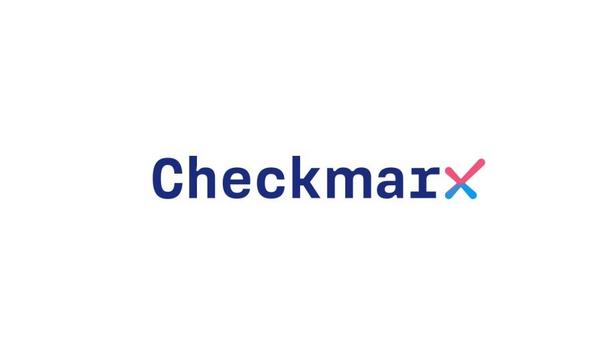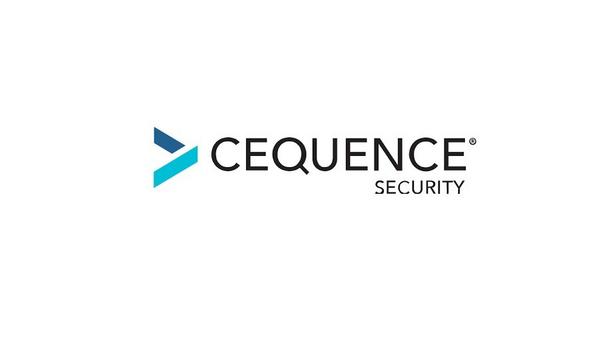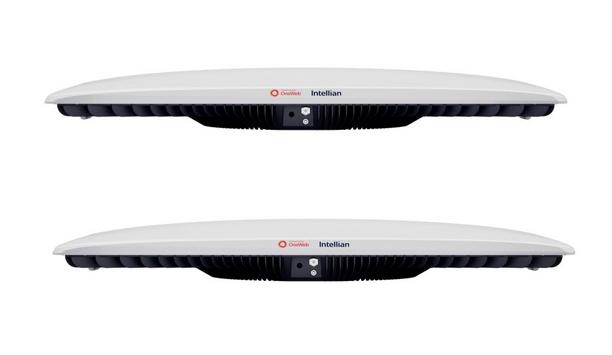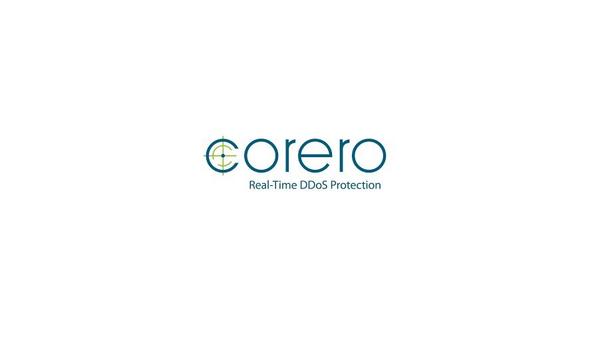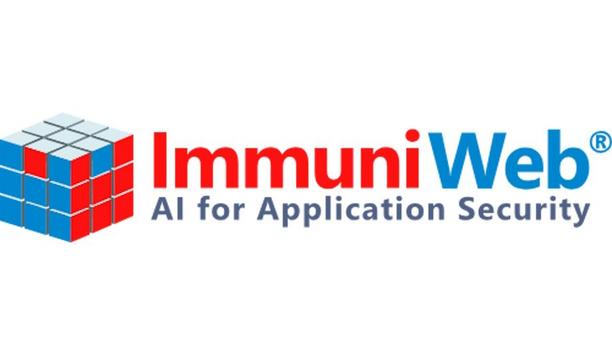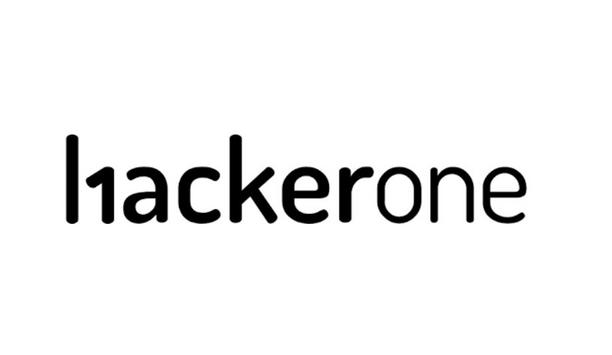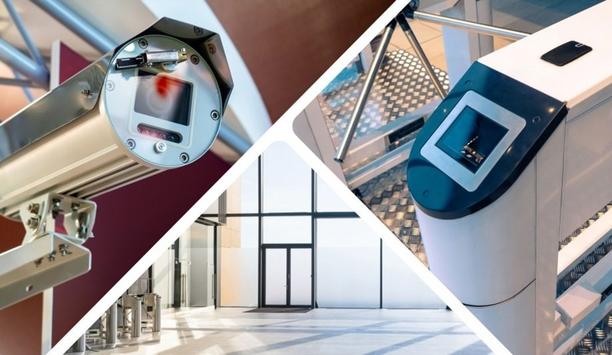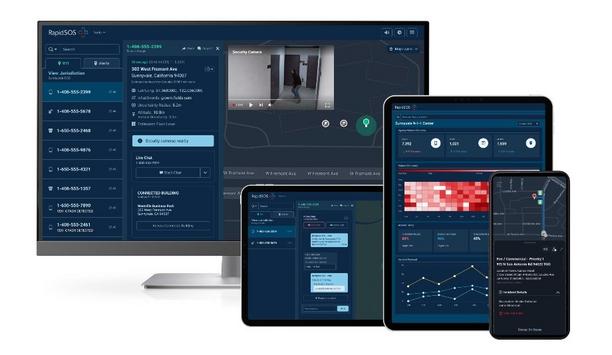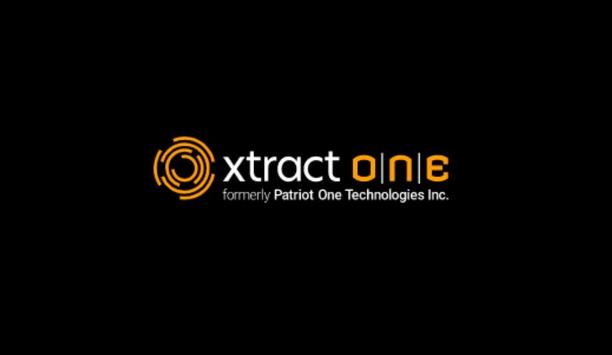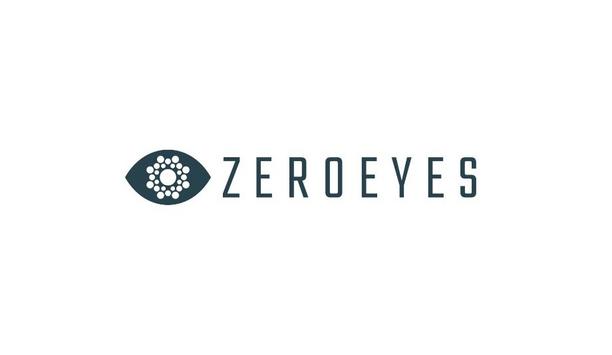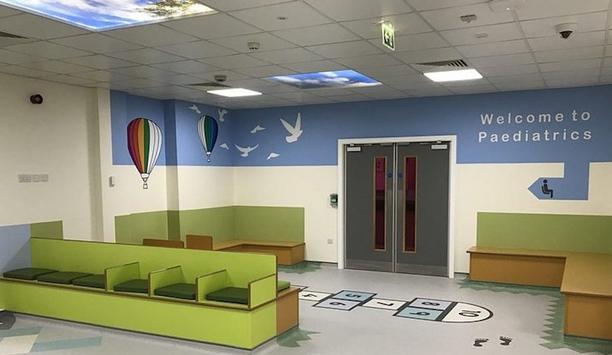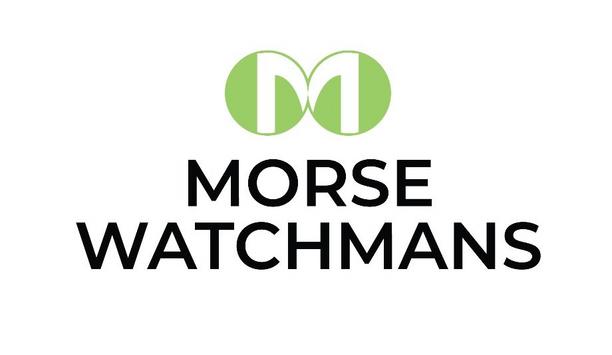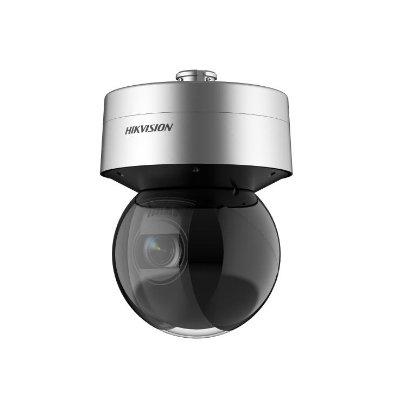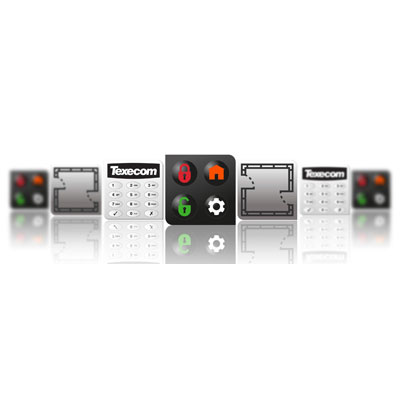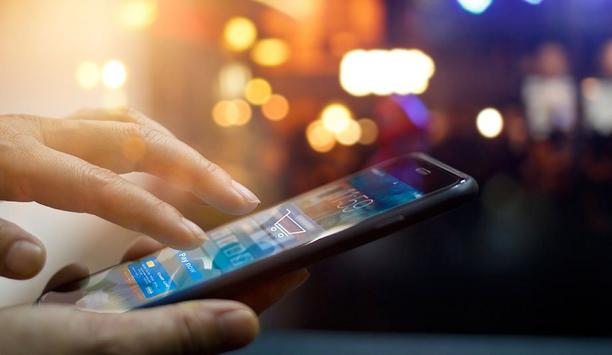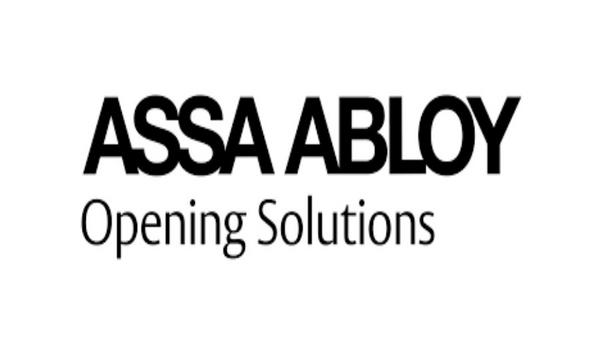Application security
AI is one of the fastest-growing technologies in the history of modern business, with the ability to revolutionize industries, optimize operations, and drive innovation, but it is also introducing security gaps, risks, and vulnerabilities. According to McKinsey, 78% of organizations are using AI in at least one business function, up from 55% two years ago. As a result, 73% of them are investing in AI-specific security tools, either with new or existing budgets, according to the 2025 Thales Data...
Checkmarx, the pioneer in agentic application security, announces its acquisition of Tromzo, a pioneer in AI-native autonomous security agents. The deal marks a major leap forward in autonomous AppSec, accelerating the delivery of AI agents that understand real enterprise risk, reason across complex software ecosystems, and remediate continuously with precision. Tromzo’s technology and world-class engineering team will enhance the Checkmarx One platform and expand the Checkmarx Assist fam...
The Center for Internet Security, Inc. (CIS®), Astrix Security, and Cequence Security now announced a strategic partnership to develop new cybersecurity guidance tailored to the unique risks of artificial intelligence (AI) and agentic systems. This collaborative initiative builds on the globally recognized CIS Critical Security Controls® (CIS Controls®), extending its principles into AI environments where autonomous decision‑making, tool and API access, and automated thre...
Cellebrite, a pioneer in AI-powered Digital Investigative and Intelligence solutions for the public and private sectors, announces it has substantially expanded its capabilities through the acquisition of Corellium, a pioneer in Arm-based virtualization software. The addition of Corellium's technology and world-class technical talent further strengthens Cellebrite's market and technology leadership. Dramatically accelerating time This combination creates the industry's most complete digital...
Intellian Technologies Inc., a global provider of resilient multi-constellation, feature-rich satellite user terminals and communications solutions, and OneWeb, the low Earth orbit (LEO) satellite communications company, have announced a new product portfolio of Intellian Flat Panel user terminals for use on OneWeb’s network. Flat Panel Series Intellian’s Flat Panel Series is a suite of both Pro and Compact user terminals that deliver exceptional performance in sle...
DigiCert, a global pioneer in intelligent trust, announced that it has joined the F5 Application Delivery and Security Platform (ADSP) Partner Program as a Select Partner. As part of this program, DigiCert is working with F5 to deliver integrated solutions that enhance security, improve operational efficiency, and simplify multicloud operations for enterprise customers. DigiCert brings automated certificate lifecycle management, centralized visibility, and policy-driven cryptographic governance...
News
42Crunch, the pioneer in DevSecOps for API security, announced that its freely available API security testing tools for developers—integrated directly into popular IDEs including VS Code, JetBrains, and Eclipse—has surpassed the 2 million downloads worldwide. This milestone reflects the accelerating demand from CISOs for enterprises to adopt a proactive approach to API security. As AI workloads multiply and organizations rely more heavily on automated systems that consume vast numbers of APIs, the attack surface is expanding at unprecedented speed. The scale and velocity of this API-driven ecosystem demand security approaches that are fully automated, continuously enforced, and built directly into development workflows. This is driving increased reliance on 42Crunch’s intuitive, shift-left tooling to help teams identify and remediate API vulnerabilities throughout the software development lifecycle—long before they can be exploited in production. Empowering developers to build secure APIs With deep integration into the most widely used IDEs and CI/CD pipelines, 42Crunch empowers developers to validate API contracts, detect misconfigurations, and eliminate vulnerabilities early—before they ever reach production. The platform’s continuous protection model supports organizations as they scale API-first architectures across cloud-native, hybrid, and enterprise environments. Building on this momentum, 42Crunch also launched earlier this year a new freemium version of its API security testing solution, enabling developers and small teams to get started easily and upgrade seamlessly as their API security needs grow. The freemium tiers (free & paid) provide instant IDE access to detailed security scoring, and guided remediation capabilities—bringing enterprise-grade API security within reach of all development teams. Explosion of APIs in modern applications “With the explosion of APIs in modern applications, developers need practical tools that make secure-by-design development the default,” said Jacques Declas, CEO of 42Crunch. “Reaching 2 million downloads is an exciting milestone that reflects the trust both the security and developer communities have placed in our approach. Our new freemium offering gives every developer—whether in a startup or a global enterprise—the ability to secure their APIs from day one.” Launched in the Microsoft Security Store 42Crunch is also proud to announce that its developer tooling is now available in the newly launched Microsoft Security Store, giving Microsoft customers a streamlined way to access and deploy API security testing capabilities across their development environments. This availability strengthens the alignment between the two companies and ensures development and AppSec teams can adopt consistent, automated API security across every stage of the API lifecycle.
Zimperium, the global pioneer in mobile security, revealed findings from its zLabs team showing that thousands of popular Android applications — including top travel, airline, and weather apps — are still using an outdated mapping component that could put users and enterprises at risk. The investigation, titled “Follow the Map to Enterprise Risk: What’s Inside Popular Android Apps,” found that a legacy library known as libmapbox-gl.so, once part of Mapbox GL Native, remains embedded in thousands of active apps despite being deprecated in 2023. The outdated library includes older code versions containing known security flaws — issues that could be exploited to compromise devices, steal data, or disrupt app functionality. Strengthening app ecosystem security Zimperium continues to work closely with Google through the App Defense Alliance (ADA) to strengthen app ecosystem security. While there is currently no evidence of active exploitation, developers using the archived Mapbox GL Native SDK are strongly encouraged to migrate to Mapbox Maps SDK v10+ or MapLibre to maintain app security and integrity. “These vulnerabilities transform everyday apps into potential attack vectors,” said Nico Chiaraviglio, Chief Scientist at Zimperium, adding “When trusted applications ship with outdated components, it creates blind spots that can expose both users and enterprises. Our mission is to help organizations gain visibility into these hidden risks — so they can protect the mobile apps and devices that power their business.” Zimperium’s analysis revealed: Thousands of Android apps still contain the vulnerable library. 40% of affected apps rank among the top 20 in their Play Store categories. Many are installed on employee devices, posing serious BYOD and enterprise exposure.
Corero, the distributed denial of service ("DDoS") protection specialists and champion of adaptive, real-time service availability, is pleased to announce good sales traction across Q3 2025, driven by a number of new customer wins and product enhancement launches, as well as a key customer renewal and expansion order in October, delivering a strong start to Q4 2025. Corero delivered a strong Q3 2025, with order intake of $7.4 million (Q3 2024: $6.0 million) and new contract wins secured across the US, UK, Europe, Brazil, and Singapore. Two additional CORE customer wins were secured in Q3 2025, following the first two CORE contracts secured in Q2 2025. DDoS protection solutions Corero secured a renewal and significant expansion order with a key customer, a pioneering US cloud computing provider, in October 2025. The renewed and expanded contract, providing DDoS protection solutions to the customer’s current and planned data center portfolio, has a total contract value of $6.8 million, $0.8 million of which was included in the Q3 2025 order intake value noted above. The $6.8 million contract consists of a $3.1 million renewal (of all existing contracts) and $3.7 million expansion, which will be delivered and recognized on a subscription basis over the three-year contract term. Customer demand requirements In addition to good customer traction in H2 2025 to date, Corero has also recently announced a number of key platform enhancements to serve customer demand requirements: Layer 7 TLS Protection blocks high-volume application-layer attacks in real time at the network edge with no additional latency, no false positives and no additional hardware. Zero Trust Admission Control uses behavioral analytics to detect and block anomalies at login portals, reducing risk from credential abuse and bot-driven attacks. Extended WAF and Application Security for Service Providers, which protects web applications and APIs using adaptive analytics, threat modeling and anti-bot capabilities, enabling service providers to offer high-value application-layer security as a managed service. Bare Metal and Commercial Off-the-Shelf Deployment Options, which extend the use cases for Corero’s software-led, hardware-agnostic capabilities to customers who desire to run Corero’s solution on hardware of their choosing. Management reaffirms the guidance for the year ending 31 December 2025, as announced on 16 July 2025, of revenue between $24.0 million and $25.5 million (FY 2024: $24.6 million) and EBITDA between $1.5 million loss and $0 million (FY 2024: $2.5 million profit). DDoS protection requirements Carl Herberger, Chief Executive Officer at Corero, commented: “I am delighted to extend our partnership with a key Corero customer and to continue to support their growing business and DDoS protection requirements. This expanded contract demonstrates Corero’s technical leadership and the confidence customers, including those managing critical infrastructures, have in our SmartWall ONE platform.” “I am encouraged by the sales growth in Q3 2025 and the strong start to Q4 2025. Our success in winning new customers and expanding our global presence, combined with Corero’s strategic focus on product innovation, continues to sit at the heart of our customer proposition.” “The H2 2025 sales momentum not only reflects our strengthening market presence but highlights the ongoing and urgent shift towards performance-driven, flexible and scalable DDoS protection to mitigate cybersecurity attacks.”
ImmuniWeb has introduced new AI-powered penetration testing capabilities within its ImmuniWeb® On-Demand solution and launched two new Continuous Threat Exposure Management (CTEM) packages — ASM (Attack Surface Management) and Dark Web monitoring — in response to emerging cybersecurity risks and novel threats. ImmuniWeb® On-Demand, the company’s award-winning web application penetration testing solution, now offers expert-driven testing of web applications and APIs powered by AI models, including Large Language Models (LLMs), within its Ultimate package. The Ultimate package now includes testing of AI-specific vulnerabilities and insecure configurations as outlined in the OWASP Top 10 for LLMs, covering issues such as Prompt Injection, Sensitive Information Disclosure, Supply Chain, Data and Model Poisoning, Improper Output Handling, Excessive Agency, System Prompt Leakage, Vector and Embedding Weaknesses, Misinformation, and Unbounded Consumption. New packages to ImmuniWeb® Discovery Furthermore, ImmuniWeb has added two new packages to ImmuniWeb® Discovery, its flagship CTEM solution: ASM (Attack Surface Management) package: designed for organizations of any size that need to have comprehensive and real-time visibility of their external attack surface, including domains, web applications and APIs, cloud infrastructure, third-party SaaS platforms, mobile apps and their endpoints, network services and devices, and IoT/OT objects exposed to the Internet. The package includes continuous monitoring and discovery of new assets, as well as continuous security testing, privacy, and compliance checkups for all assets. Dark Web package: engineered for companies of any size that require actionable and noise-free Dark Web monitoring, cyber threat intelligence (CTI), and Indicator of Compromise (IoC) monitoring on their enterprise, employees, executives, clients, and partners. The package includes daily updates from over 1,000 traditional Dark Web resources, Telegram and IRC channels, invitation-only underground marketplaces, and other hidden locations where cybercriminals trade or advertise stolen data, credit cards, personal information, or other commercially valuable information. ImmuniWeb released over 500 updates In addition to these new offerings, ImmuniWeb released over 500 updates, improvements, novel features, and integrations across its products in Q3, including ImmuniWeb On-Demand, ImmuniWeb MobileSuite, ImmuniWeb Continuous, ImmuniWeb Neuron, ImmuniWeb Neuron Mobile, and ImmuniWeb Discovery. The new features are already available to all customers at no extra cost and are being presented in detail during ongoing and upcoming webinars and product training sessions. Implementations of new features and functionalities Dr. Ilia Kolochenko, Chief Architect & CEO at ImmuniWeb, stated: “We are grateful to all our customers and partners from over 50 countries for their ongoing support and motivation to continually innovate, making our products even better on the rapidly growing cybersecurity market." "Driving our technical improvements and implementations of new features and functionalities on a daily basis, I am truly excited to see how we implement those features that our customers and partners need the most amid the swift proliferation of new cyber threats and novel attack vectors." "In addition to numerous technical updates and new features, ImmuniWeb continues to enhance its products with new offerings in response to emerging cybersecurity risks and novel threats. Kudos to the incredible ImmuniWeb Team for our hard work and unstoppable success. More is coming soon, please stay tuned.”
HackerOne, a pioneer in offensive security solutions, announces the evolution of HackerOne AI, Hai, from a copilot into an agentic AI system, and the general availability of its AI-native code security product, HackerOne Code. Together, they set a new standard in continuous exposure management by accelerating how enterprises find, prioritise, and remediate vulnerabilities. Hai is HackerOne’s coordinated team of AI agents that continuously analyses and contextualises findings to help organizations prioritise, validate, and remediate risks faster, guided by insights from over 500,000 validated vulnerabilities. 70% of users cite time savings as the biggest impact, with users saving up to 40+ hours every month, a full work week. Remediating risks faster Hai’s current agents are reshaping workflows: Priority Escalation Agent uncovers critical risks without delay Deduplication Agent eliminates duplicates and reduces noise Report Assistant Agent ensures complete, consistent reports Insight Agent surfaces historical context to accelerate validation “Hai cut our validation time from 20 minutes to just 5," said Connor Knabe, Application Security Architect, Veterans United Home Loans. "By replacing manual steps with clear context, we validate faster, clarify impact, and stay aligned.” Code security solution To solve the challenge of discovering and eliminating vulnerabilities before applications are deployed, HackerOne Code is now generally available. Built for the AI development era, HackerOne Code is a code security solution that works like a developer and thinks like a security researcher—scaling vulnerability discovery with AI and human oversight. HackerOne is also previewing the next milestone in its agentic roadmap: Agentic Pentest as a Service (PtaaS). Taking validation a step further, Agentic PtaaS continuously proves exploitability at AI-driven scale while keeping human ingenuity at the core. This breakthrough extends exposure management into adversarial validation, delivering real proof of exploitation so organizations can prioritise and remediate with greater confidence. AI-powered offensive security “Hai has been central to our vision for AI-powered offensive security, and today marks the next stage in its evolution,” said Nidhi Aggarwal, Chief Product Officer at HackerOne. “Powered by the insights drawn from over a decade of offensive security expertise, Hai’s new agents and the introduction of Agentic PtaaS extends its capabilities from validation to proof of exploitability, helping organizations continuously reduce exposure and accelerate remediation at scale. In the AI era, secure development must be built in, not bolted on. HackerOne Code empowers developers with validated, trusted code fixes directly within their workflows, enabling them to innovate faster without increasing risk.”
AI-powered cybersecurity firm Shinobi has announced a major expansion of its platform – the ability to penetration test mobile applications with the same skill, reasoning, and precision as human experts, but delivered continuously and at machine speed. With phones having become vaults for employees’ digital lives, holding money, messages, health data, and work communications, attackers are increasingly targeting mobile apps. New vulnerabilities emerge with every update But traditional mobile app pentesting has long been manual, slow, and expensive, providing only a snapshot in time while new vulnerabilities emerge with every update. Shinobi changes that, with its AI pentesters that understand, analyze, and exploit mobile apps the way elite human teams do – inspecting code, mapping APIs, and uncovering real attack paths. But unlike human-led tests, Shinobi runs autonomously, continuously, and in hours instead of weeks, keeping security aligned with every release. Shinobi's update With this update, Shinobi enables organizations to: Continuously test mobile apps at the speed of development Detect real, exploitable vulnerabilities – including complex business logic flaws Reduce testing time and cost by up to 90% Front line of business risk “Mobile apps are so essential to everything that we do. As a result, they have become vaults for our entire lives which means they become the front line of business risk,” said Varun Uppal, Founder and CEO of Shinobi. “Attackers are already using AI, and Shinobi helps defenders fight back, faster.”


Expert commentary
The artificial intelligence revolution in physical security has arrived, transforming how we protect people, assets, and infrastructure. From smart buildings that automatically adjust access protocols based on real-time threat assessments to healthcare facilities using AI-enhanced video analytics for patient safety, these technologies are reshaping the industry landscape. But with this transformation comes a new era of regulatory oversight that security professionals must navigate carefully. Convergence of AI The convergence of powerful AI capabilities with traditional security systems has created unprecedented opportunities for enhanced protections while simultaneously raising important questions about privacy, transparency, and responsible deployment. As these technologies become more sophisticated, security professionals face the dual challenge of maximizing their potential while ensuring compliance with evolving regulatory frameworks. The current state of AI in security systems By combining multiple data streams, AI creates a more comprehensive and intelligent security ecosystem Today's AI-driven security solutions extend far beyond traditional security capabilities. Modern systems can understand complex human behaviors, analyze crowd patterns in transportation hubs, detect early signs of trouble in retail environments, and even predict potential security breaches before they occur. By combining multiple data streams — video feeds, access control systems, audio detection, and various sensors — AI creates a more comprehensive and intelligent security ecosystem. Industrial applications The impact is particularly evident in integrated security operations. In healthcare settings, AI systems can simultaneously monitor patient safety, manage access control, and detect unauthorized entries, all while maintaining strict privacy protocols. In education environments, these technologies help safeguard campuses by identifying unusual behavior patterns while respecting student privacy rights. Retail operations benefit from AI's ability to not only detect potential theft but also analyze customer flow patterns and identify operational inefficiencies. The technology's capabilities continue to expand through: Advanced anomaly detection that establishes normal activity patterns and flags deviations. Predictive analytics that forecast potential security risks before incidents occur. Natural language interfaces that allow security teams to query video data using voice or text commands. Multimodal analysis combining data from thermal cameras, LIDAR, IoT sensors, and other sources. Integration of multiple data sources Security systems are evolving into predictive platforms that can anticipate and prevent incidents These innovations represent just the beginning of AI's potential impact on security applications. As algorithms become more sophisticated and computing power increases, security systems are evolving into predictive platforms that can anticipate and prevent incidents rather than simply respond to them. The integration of multiple data sources allows for a more nuanced understanding of security situations, enabling more precise and effective responses to potential threats. Emerging regulatory frameworks The rapid advancement of AI capabilities has prompted governments worldwide to develop comprehensive regulatory frameworks. The European Union has taken the lead with its AI Act, categorizing AI systems based on their potential risks and establishing strict guidelines for high-risk applications. Focus on safe, secure AI The United States is following suit, with recent executive orders focusing on safe, secure, and trustworthy AI development. These initiatives reflect growing global awareness of the need to balance technological advancement with ethical considerations and human rights protection. These regulations are reshaping how security technology providers approach development and implementation. Responsibility-by-design approach Companies must consider the entire lifecycle of their AI solutions, from initial development The focus has shifted toward a "responsibility-by-design" approach, where privacy protection, data security, and ethical considerations are built into systems from the ground up. This includes robust testing protocols, responsible data practices, and continuous monitoring of AI systems post-deployment. Companies must consider the entire lifecycle of their AI solutions, from initial development through deployment and ongoing operation. Transparency, accountability For security professionals, this regulatory evolution means adapting to new requirements around transparency, accountability, and human oversight. Security teams must document how AI systems make decisions, implement safeguards against bias, and ensure human operators maintain final authority over critical security decisions. The regulations also emphasize the importance of data protection, requiring organizations to implement strict controls over how information is collected, stored, and used within AI-powered security systems. Address challenges of AI The regulatory landscape continues to evolve, with new frameworks emerging that specifically address the unique challenges of AI in security applications. These include requirements for regular system audits, mandatory impact assessments for high-risk deployments, and specific guidelines for handling sensitive personal data in security contexts. Organizations must also develop clear procedures for addressing potential AI system errors or biases, ensuring that corrective measures can be implemented quickly when needed. Preparing for the future The challenge lies in maximizing security effectiveness while maintaining transparency and public trust The security industry stands at a crucial junction where innovation meets responsibility. As AI capabilities grow more sophisticated, security professionals must balance the use of these powerful tools while adhering to evolving regulatory requirements. This balance becomes particularly critical in smart city applications, where AI systems might monitor public spaces for safety while respecting individual privacy rights. The challenge lies in maximizing security effectiveness while maintaining transparency and public trust. Proactive approach Success in this new landscape requires a proactive approach. Security teams should invest in understanding both the technical capabilities and regulatory implications of their AI systems. This includes developing clear protocols for data handling, establishing robust testing procedures, and implementing continuous monitoring systems that can detect and address potential issues before they become problems. Organizations must also create comprehensive training programs to ensure security personnel understand both the capabilities and limitations of AI-powered systems. Human-in-the-loop approach The human element remains crucial. While AI can process vast amounts of data and identify patterns beyond human capability, security professionals must maintain oversight and final decision-making authority. This "human-in-the-loop" approach ensures that AI serves as a powerful tool for augmenting human judgment rather than replacing it. Training and education become increasingly important as security teams must understand not only how to operate AI-enhanced systems but also how to interpret their outputs and make informed decisions based on AI-generated insights. An ever-evolving environment The integration of emerging technologies like large language models and computer vision will create new opportunities Looking ahead, the security industry will likely see continued evolution in both AI capabilities and regulatory requirements. Future systems may incorporate more advanced predictive capabilities, enhanced natural language processing, and improved ability to understand complex human behaviors. However, these advancements will need to develop within an increasingly structured regulatory framework that prioritizes privacy, transparency, and ethical use. The integration of emerging technologies like large language models and computer vision will create new opportunities while also introducing novel regulatory challenges. Physical security transformation The transformation of physical security through AI represents both an opportunity and a responsibility. By embracing responsible innovation practices while maintaining strong ethical standards, security professionals can help shape a future where advanced AI capabilities and regulatory compliance work together to create safer, more secure environments for everyone. Need for security guidelines The key to success lies in viewing regulatory requirements not as obstacles but as guidelines for developing more trustworthy and effective security solutions. As the industry continues to evolve, organizations that prioritize both innovation and compliance will be best positioned to leverage AI's full potential while maintaining public trust and regulatory compliance.
The days of being reactive are over. That’s right, we as an industry, can no longer afford to be reactive. As threats evolve, the need for proactive security is critical. While traditional methods, including physical barriers and security personnel, are still necessary, the future of our approach is built on the backs of emerging technologies. Substantial vulnerabilities As an industry, we’ve operated reactively for decades, it has been common for security teams to address threats only after they occur. The growing risk landscape proves that this approach has significant limitations. Human oversight, delayed responses, and the inability to monitor large areas have exposed substantial vulnerabilities. Emergence of AI AI enables real-time monitoring, advanced data analysis, and more accurate risk detection Times are changing though and it’s largely due to the emergence of AI. AI is revolutionizing the security landscape by making technology smarter. It enables real-time monitoring, advanced data analysis, and more accurate risk detection. This ensures a higher level of security and safety, minimizing potential incidents' impact while enhancing overall safety. Focus on strategic aspects AI's ability to process vast amounts of data quickly and accurately is, quite frankly, a game-changer. It can identify patterns and anomalies that can provide stakeholders with critical insights to respond in a more prepared manner. By automating routine tasks and highlighting potential issues, AI also allows operators to focus on more complex and strategic aspects of security management, rather than responding to false alarms. The future is AI The future of security lies in AI. The Security Industry Association (SIA) has recognized AI as one of the top security megatrends in 2024. However, the challenge is not adopting AI, it is about effectively using it to enhance security. AI can enhance video surveillance by improving object detection and enabling real-time, informed responses AI systems can easily integrate with existing infrastructures, providing a layered defense that combines traditional methods with more modern technology. For example, AI can enhance video surveillance by improving object detection, reducing false alarms, and enabling real-time, informed responses. This ensures that security measures are adaptive, scalable, and capable of addressing the evolving risk landscape. Don’t react, anticipate One of AI's most significant benefits is its ability to provide proactive insights. AI can predict potential breaches by analyzing behavior patterns and detecting anomalies allowing security pioneers to do something before an event happens. This shift, from reactive to anticipatory measures, marks a significant advancement in asset protection and risk management. AI systems can also continuously analyze data and distinguish between everyday events and real-world threats. It’s AI's continuous learning capabilities that mean the systems can adapt and improve over time to become more accurate and efficient in threat detection and response. Save money, scale on demand Contrary to common belief, adopting AI technologies will not put a security department over budget. It may be surprising, but these solutions offer cost-effective and scalable alternatives to traditional security measures. An initial investment in AI technology can result in substantial long-term savings (and ROI) by reducing the need for physical infrastructure and on-site security personnel. Customizable solutions The ability to scale and customize AI solutions makes them an efficient choice for enhancing perimeter defense AI systems are also inherently scalable and can be tailored to meet the specific needs of different environments. This ensures the system can evolve with emerging threats and technological advancements without requiring a complete system overhaul. The ability to scale and customize AI solutions makes them a practical and efficient choice for enhancing perimeter defense. How’s that for staying within budget? Embrace the possibilities Integrating AI into perimeter security is the future of proactive and intelligent security. As these technologies continue to evolve, we can expect even more refined solutions that are predictive, autonomous, and capable of directly addressing new and emerging threats. We’re experiencing an exhilarating transformation as AI becomes more trusted, precise, and advanced on multiple levels. This evolution is bigger than pilots and small, low-profile deployments. AI in perimeter security For instance, France is preparing to deploy AI-powered video surveillance as it gears up to host the 2024 Olympics, part of its efforts to detect sudden crowd movements, abandoned objects, and suspicious activities. Think about the sheer scale of that project. We’re finally moving forward, and staying one step ahead must be our priority. But this shift requires a significant change in mindset. Are you ready to make the change?
Educational institutions worldwide increasingly rely on robust wireless networks to enhance academic pursuits, safety measures, and operational efficiency. The campus environment, a complex network of interconnected buildings, and the humans navigating them require innovative technologies to meet these diverse needs. The solution lies in a new wireless protocol that provides an ideal fit for the long-range, low-power connectivity requirements of educational campuses: Wi-Fi-certified HaLow. Wi-Fi HaLow: Wi-Fi HaLow, a new Wi-Fi certification released by the Wi-Fi Alliance in November 2021 and incorporating the IEEE 802.11ah standard, is optimized for the unique requirements of Internet of Things (IoT) applications. Wi-Fi HaLow provides a reliable and robust wireless solution that overcomes the trade-offs Its combination of long-range connectivity, low power consumption, advanced Wi-Fi CERTIFIED WPA3 security features, and the ability to connect more than 8,000 devices from a single access point makes the protocol a game changer for campus environments. Wi-Fi HaLow provides a reliable and robust wireless solution that overcomes the trade-offs between range and speed that limit the effectiveness of conventional Wi-Fi in the 2.4, 5, and 6 GHz frequency bands for campus applications. Robust, secure connections for access control Operating at sub-GHz frequencies, the Wi-Fi HaLow protocol's unparalleled ability to penetrate physical barriers and its advanced security features make it an ideal wireless technology for supporting access control systems throughout campuses. Credential systems for students, badge scanners, cameras, and dormitory door locks can work efficiently and securely in hard-to-reach locations, providing an interconnected and safe environment for the campus community. Enhancing safety through improved connectivity Body-worn cameras used by public safety officers can remain connected to the wireless local-area network The low-power and long-range attributes of Wi-Fi HaLow can play a significant role in strengthening campus safety systems. Body-worn cameras used by public safety officers can remain connected to the wireless local-area network (WLAN) or mobile router in their patrol vehicles even at a long distance, reducing the need to consume cellular data. Wi-Fi HaLow enables the development of robust wireless networks that can reliably support campus-wide, two-way video intercoms, potentially enhancing response times and safety measures. Streamlining outdoor equipment automation Outdoor equipment automation, such as irrigation systems, smart lighting, and robotic lawnmowers, can leverage Wi-Fi HaLow's power efficiency, and long-range and expansive coverage. Automation of these systems with such efficient wireless connectivity can lead to significant energy savings, improved productivity, and reduced operational costs. Delivering superior speed and range 8 MHz capable device using 64 QAM modulation can transmit at speeds of up to 32 megabits per second A Wi-Fi HaLow network shatters the traditional tradeoff of wireless communications between speed and range. A single-stream, 8 MHz capable device using 64 QAM modulation can transmit at speeds of up to 32 megabits per second at sub-GHz frequencies, enabling live streaming on large screens, connecting multiple real-time AI edge cameras, as well as thousands of low-power IoT devices, all connected without compromising on range. Wi-Fi HaLow signals can extend beyond 1 kilometer, up to 10 times farther than traditional forms of Wi-Fi in the 2.4, 5, and 6 GHz frequency bands, and are capable of connecting far-flung devices and systems across campus environments. Setting a new standard for campus connectivity By addressing the connectivity needs of modern campuses, Wi-Fi HaLow paves the way for future campus applications. As we navigate the digital era, Wi-Fi HaLow presents a compelling solution that significantly enhances connectivity, safety, and efficiency. This leap in wireless capabilities isn’t merely incremental; it represents a transformative stride toward a smarter, more connected future. Wide-reaching wireless network Educational institutions can leverage Wi-Fi HaLow to create safer, more efficient, and interconnected campus environments. By providing a robust, reliable, and wide-reaching wireless network, Wi-Fi HaLow enables campuses everywhere to fulfill their diverse connectivity needs without compromise.
Security beat
In today's complex security landscape, ensuring the safety of building occupants and assets requires more than just cutting-edge technology. Holistic approach The SHIELD certification, introduced by the Secure Buildings Council, is designed to help building owners, tenants, and security professionals navigate this challenge effectively. SHIELD offers a holistic approach to physical security that emphasizes not just the systems in place, but the collaboration among all stakeholders. With practical, actionable guidance, SHIELD certification seeks to become a benchmark for secure building environments. What is SHIELD? Its primary goal is that buildings are equipped with security systems and protocols that protect against threats SHIELD is a comprehensive certification program developed by the Secure Buildings Council to establish and maintain a standard of excellence in building security. Its primary goal is to ensure that buildings are equipped with security systems and protocols that not only protect against threats but also enhance the overall safety and operational efficiency of the facility. Forward-thinking design It encourages a multi-disciplinary approach, bringing together building owners, managers, security professionals, architects, and engineers to foster an integrated security strategy. By adhering to SHIELD's standards, facilities can assure tenants, visitors, and investors that the building is designed to be a secure and resilient environment. The intent is to create safer spaces through collaboration, forward-thinking design, and stringent security measures. Enhancing security and building resilience SHIELD certification helps to ensure that buildings are not only secure from external threats but are also resilient in the face of internal vulnerabilities. This includes everything from access control systems and surveillance infrastructure to cybersecurity measures and emergency response protocols. Detailed framework SHIELD acts as a roadmap to assess and improve the effectiveness of a building's security architecture The certification process provides a detailed framework for identifying potential risks, implementing best practices, and continuously monitoring security measures. For security professionals, SHIELD acts as a roadmap to assess and improve the effectiveness of a building's security architecture. The program emphasizes the importance of both physical and digital security, recognizing that modern threats often cross over from one realm to the other. Benefits for tenants, investors, and facility managers One of the standout benefits of SHIELD certification is the assurance it provides to tenants and investors. Certified buildings demonstrate a commitment to security that can attract higher-quality tenants and increase the building’s market value. For investors, a SHIELD-certified building represents a lower-risk investment, as the facility is better protected against both physical threats and operational disruptions. Standardized procedures Additionally, facility managers benefit from SHIELD's emphasis on clear, standardized procedures for maintaining and upgrading security measures. The certification helps streamline operations by ensuring that all security protocols are applied consistently and reviewed regularly. This results in a safer, more efficient building environment for everyone involved. Promoting collaboration and industry integration Architects, engineers, and security professionals are encouraged to work together from the earliest stages SHIELD certification is not just about the implementation of security technologies—it is also about fostering collaboration among various stakeholders. Building owners, architects, engineers, and security professionals are encouraged to work together from the earliest stages of design and planning. This collaborative approach helps ensure that security measures are integrated into the fabric of the building, rather than being tacked on as an afterthought. Multi-disciplinary synergy Furthermore, SHIELD works in alignment with other industry standards, such as LEED for environmental sustainability and WELL for health and well-being. This multi-disciplinary synergy allows building owners to pursue multiple certifications concurrently, enhancing the building's overall value and appeal. Achieving SHIELD certification: The process The process to become SHIELD certified involves a comprehensive assessment of a building’s security features and protocols. This begins with a gap analysis, where security professionals evaluate the building's current state against SHIELD's stringent standards. From there, a detailed action plan is developed to address any deficiencies. Once the necessary upgrades and protocols are in place, the building undergoes a final audit before the certification is awarded. Incorporating multiple elements SHIELD takes a holistic approach that encompasses not just physical security but also digital and procedural elements A common misconception about SHIELD is that it is solely focused on physical security systems. In reality, SHIELD takes a holistic approach that encompasses not just physical security but also digital and procedural elements. Another misconception is that SHIELD is only applicable to large-scale commercial properties, when in fact it can be adapted for buildings of various sizes and functions. Global adoption of SHIELD certification SHIELD certification is seeing increased adoption across North America, Europe, and parts of Asia. Its focus on a comprehensive, collaborative approach to security has made it particularly attractive in high-risk industries such as finance, healthcare, and data centers. While it is still gaining traction in some regions, SHIELD is poised to become a global standard for building security in the coming years. SHIELD certification represents a significant step forward for building security. By fostering collaboration and emphasizing a holistic approach, SHIELD helps create safer, more resilient buildings that protect both the physical structure and the people and assets inside.
The shift from standalone systems to fully integrated solutions is one of the biggest shifts the security industry has experienced in recent years. There is a higher demand for integrated solutions that go beyond just security at the device and software level, and manufacturers have been continuously developing improved application programming interfaces (APIs), and hybrid and cloud-connected solutions. Artificial intelligence (AI) Also, artificial intelligence (AI) plays an important role in modern intrusion systems by helping enable automated threat detection, real-time response, and predictive analysis. AI algorithms can analyze vast amounts of data to identify patterns and anomalies that may indicate security breaches. Security solutions are being developed with a focus on AI and machine learning to provide more proactive and resilient defenses against increasingly sophisticated cyber threats. Benefits of AI AI-driven security solutions can continuously learn and adapt to new threats, providing more robust protection “The practical benefits of AI in security systems include enhanced accuracy in detecting threats, reduced response times through automation, and the capability to anticipate and prevent potential vulnerabilities before they are exploited,” says Sergio Castillejos, President, of Commercial Security at Honeywell. Additionally, AI-driven security solutions can continuously learn and adapt to new threats, providing businesses with more robust and dynamic protection. Unified Intelligent Command user interface Honeywell meets the challenge of better-integrated systems with a unified Intelligent Command user interface (UI). Castillejos says Honeywell continually innovates with the latest analytics and encryption to keep up with evolving threats. Honeywell’s products integrate with many offerings for partners to construct a robust and modern system relevant to their security needs. Advanced cloud-based security Advanced cloud-based security technologies have been developed that offer real-time monitoring, automated threat detection Advanced cloud-based security technologies have been developed that offer real-time monitoring, automated threat detection, and remote management, essential for hybrid work environments, says Castillejos. “These solutions enhance scalability, improve data analytics capabilities, and provide seamless updates reducing significant maintenance costs that help companies to respond swiftly to emerging threats and enable robust, adaptive security measures.” Physical and digital security The best security systems are a combination of physical, digital, and national security, says Castillejos. While Honeywell focuses on providing the best in physical and digital security within their solutions, protecting sensitive and/or personal information must also be within the responsibility of the organizational policy. Cybersecurity for connected devices Some of the challenges in the next five years will likely include integrating advanced technologies Security systems can safeguard this information by being highly configurable while also notifying users of unwanted activity. Sometimes, just restricting access to sensitive areas can be enough. However, in the world of data analysis and machine learning, security systems can audit and report on users who have accessed data to ensure that the protections are in place. Some of the challenges in the next five years will likely include integrating advanced technologies such as AI and the Internet of Things (IoT) while securing cybersecurity for connected devices, notes Castillejos. Balancing act “Additionally, there will be a growing need for skilled professionals to manage and maintain these complex, connected systems,” he says. “Balancing cost-effectiveness with the demand for resilient security solutions will also pose a significant challenge, especially for smaller businesses.” Legacy systems that are susceptible to vulnerabilities like cloning or unauthorized access present the largest challenge to overcome. “However, as technology evolves, it becomes more challenging for a customer to manage a unified security system rather than a collection of unique solutions that all operate independently,” says Castillejos. Disruptive technology But investing in the newest analytics, AI and IoT will not improve a company’s physical security systems if they do nothing with the data. “They are not a replacement for the devices that keep people and property safe,” says Castillejos. “They can enhance a user’s experience and speed up the time to respond when they are planned correctly.” The best security systems will look at disruptive technology as another tool in the overall system. However, the focus should remain on the user experience. If the latest technology is not properly integrated or configured, it will turn into more noise that most operators will ignore. {##Poll1720586145 - Which is the most useful benefit of artificial intelligence (AI) in security systems?##}
In an emergency, information is pivotal. More information provides better understanding of an emergency and empowers potentially life-saving decision-making. Emergency response teams depend on information to guide their efforts and to deliver targeted assistance. On the front lines of emergency response are 911 and field responder agencies, which must direct reaction to life-or-death situations rapidly and efficiently. Historically, 911 operators had to respond based on very little information, perhaps just a voice on the phone or a location on their screen. Providing critical information Today, there are literally millions of information sources available, ranging from connected buildings to vehicle telematics to live video streams to health information from wearable devices. In fact, there are 540 million connected devices, any one of which could provide critical information in an emergency. But how can those information sources be leveraged to improve emergency response? That’s the mission and value proposition of RapidSOS, an ‘intelligent safety platform’ company that connects 911 operators with the vast universe of information available to promote better and faster emergency response. Highly sophisticated operation The platform is integrated into every major public safety software system and first responder agency “RapidSOS fuses human and artificial intelligence to put critical information from any connected device directly into the existing systems and operating procedures of first responders across the United States,” says Michael Martin, CEO of RapidSOS. RapidSOS is widely used by first responders. The platform is integrated into every major public safety software system and first responder agency. There are more than 4,600 software integrations that serve more than 21,000 first responders and 911 agencies. In 2023, RapidSOS supported the lifesaving work of public safety across 171 million emergencies with 3.3 billion data payloads. The system is adaptable and configurable to support any agency, from a highly sophisticated operation in New York City to a local sheriff running their own 911 center. Intelligent analytics and reporting RapidSOS Unite is the latest evolution of the product, a single solution that includes AI automation, rich content pathways, redundant connection to caller phones, and access to millions of connected devices. In an emergency, Unite intelligently fuses data from among millions of sensor feeds into a unified picture of an incident, allowing public safety officials to view real-time location, health profile, telematics, alarm data, and more. RapidSOS Unite is the latest evolution of the product, a single solution that includes AI automation RapidSOS offers core modules that handle call, text, video, sensor, mapping, and administration tools, and that provide partner data from connected devices. Additional modules provide enhanced geographic information system (GIS) data, and automated translation and transcription. There is also a single sign-on (SSO) upgrade, intelligent analytics and reporting, and seamless integration into field responder applications. Field responder applications Consider how an emergency might unfold and how RapidSOS can help. In a car accident, data from a modern automobile telematics system can alert a 911 operator of the accident as it happens. Data from a passenger’s wearable device might provide information about their health and condition. A nearby video or traffic camera could fill in details of how the accident occurred. Useful information in an emergency might come from any one of thousands of sources, including public safety data, sensor feeds, enterprise security systems, smart phones, etc. In a train derailment, electronic access to the cargo manifest can identify which train cars contain hazardous materials and how to manage the specific type of hazmat. This information could save valuable time when responding to incidents like the Feb. 3, 2023, Norfolk Southern train derailment involving 38 cars in East Palestine, Ohio. Consider how an emergency might unfold and how RapidSOS can help Institutional security partners Norfolk Southern is one of the companies that provides information to first responders using RapidSOS; in effect, the company provides a direct digital link from their rail security operations to any first responder in the United States. Amazon’s global operations centers also interface with RapidSOS to provide critical information to first responders. Partnering with corporate security helps to better support the flow of data from institutional security partners and their solutions. Information can transform and guide emergency responses. For example, in a structure fire, real-time sensor feeds throughout a building can help 911 and first responders understand how the fire is progressing. Real-time security camera footage Having access to live feeds can save lives as 911 provides pre-arrival instructions such as CPR Leading the way to providing video feeds from private camera systems to 911 operators is an agreement between Eagle Eye Networks and RapidSOS, which was announced in April 2024. The agreement allows an enterprise to opt-in to share real-time security camera footage from an Eagle Eye video stream during a live 911 call. Having access to live feeds can save lives as 911 provides pre-arrival instructions such as CPR. “Security cameras are crucial in many locations, including schools, but previously those cameras could not be accessed by 911 during an emergency but were only used for investigation after an incident,” says Martin. Improving fire and life safety systems RapidSOS is also integrated with Honeywell’s Connected Life Safety Services (CLSS) system, a cloud platform that combines software and hardware to improve fire and life safety systems. Technology integrations between the two companies further modernize and digitize the public safety communications process to provide faster, more accurate communications with emergency centers (i.e., 911 agencies). RapidSOS technology securely transmits detailed data about an emergency CLSS provides real-time visibility and connectivity to help systems integrators and facilities managers make informed decisions and manage fire systems more efficiently. When combined with Honeywell's solutions, RapidSOS technology securely transmits detailed data about an emergency, such as the type of hazard, severity, and location within the impacted building, to emergency response centers. Video object detection Rapid SOS’s emerging Harmony artificial intelligence (AI) product serves as a ‘co-pilot’ for 911 operators, helping them manage the high volume of emergencies by making their response more efficient. Harmony pulls all the sensor feeds in an emergency and works to make only the most important information available in the hands of 911 and first responders. Harmony can take key insights from text and video data, use ‘sentiment analysis’ to determine the emotion tone of a message, and help 911 professionals using language translation, keyword alerts and video object detection. Harmony can help local agencies as they address a 25% average staffing shortage by providing additional support to 911 professionals while lessening the workload. Harmony is also working to help RapidSOS expand the ecosystem, stitching more data together and quickly making it more actionable than ever. Emergency response system RapidSOS also interfaces with Iamresponding, a comprehensive end-to-end emergency response system for first responders in the fire and other emergency sectors. Iamresponding’s field responder application is used by RapidSOS to get information out to first responders in the field. More than 650,000 first responders use RapidSOS’s field application RapidSOS’s recent acquisition of Iamresponding helps the company improve the connection with the last mile “in-the-field” piece of the puzzle, ensuring partners across computer-aided dispatch (CAD), integrated applications, mobile data terminals, body cameras and other responders have access to critical data. More than 650,000 first responders use RapidSOS’s field application. Enhancing emergency response RapidSOS’s Safety Pioneer Program formalizes the important partnership between RapidSOS and public safety agencies. Participants in the program receive early access to new platform features, contribute to the platform roadmap, and drive feedback to enhance emergency response. “911 and first responders do incredible lifesaving work,” says Martin. “Everything we have done and built at RapidSOS is a direct result of the engagement, partnerships, inside advice and insight we have gotten from public safety. We have learned from them, developed new technologies and tested them.” Martin adds: “Companies have data and we now know how to make that data actionable into the hands of 911 and first responders to save lives. This is an exciting moment for us continuing our mission in partnership with public safety, and for technology and security companies to have a major hand in that.” {##Poll1719488782 - What is the most valuable benefit of artificial intelligence (AI) in an emergency call center?##}
Case studies
Xtract One Technologies announced its SmartGateway has been selected by Nova Scotia Health to strengthen security measures and provide AI-powered weapons detection across facilities province-wide, with an initial order of 25 systems. Nova Scotia Health, in tandem with its nurses’ union, is working to modernize and strengthen security across its facilities to ensure a safe environment for all patients, visitors, and staff. Adopting and deploying advanced technologies like SmartGateway is an important step toward achieving that goal. Safe and secure health care By helping to limit the number of potentially dangerous items entering their hospitals, this technology supports its commitment to providing safe and secure health care. Xtract One was selected for its proven efficacy to accurately detect knives, a top priority for the organization. Previously tested in Truro, Nova Scotia, over a 12-day trial period, SmartGateway successfully scanned 7,400 individuals entering the facility and detected 49 prohibited items during that period, mostly pocket knives and box cutters. Deploying SmartGateway “Violence against healthcare workers is a challenge that persists and demands addressing. By deploying SmartGateway, Nova Scotia Health is setting an important example for what it means to take meaningful action to protect frontline healthcare workers, patients, and visitors,” said Peter Evans, CEO of Xtract One. “This installation marks another key step in our expanding work with Canadian healthcare organizations, having deployed in Manitoba earlier this year. We look forward to continuing to deliver effective threat detection as more providers take proactive measures to prioritize security and peace of mind for their teams.” Overall approach to security “Our goal is to deliver first class healthcare, and ensuring the safety of all who enter our facilities is a critical step in providing that service,” said Dean Stienburg, Director of Security for Nova Scotia Health. “With SmartGateway, we’re making tangible strides in bolstering our overall approach to security. We were impressed by the system’s effectiveness during the trial period and are looking forward to the deployment helping us mitigate and respond to the threats of today’s environment.” Maximising security screening outcomes SmartGateway delivers fast, discreet, and accurate individual screening, utilizing AI-powered sensors to unobtrusively scan for weapons and other prohibited items upon entry. This technology replaces intimidating, traditional metal detectors and mitigates the need for individuals to remove personal items. This prioritizes individual privacy and comfort, all while maximizing security screening outcomes. SmartGateway is designed to enable seamless passage through checkpoints and promote the uninterrupted flow of movement.
ZeroEyes, the creators of the only AI-based gun detection video analytics platform that holds the full U.S. Department of Homeland Security SAFETY Act Designation. Announced that its proactive gun detection and intelligent situational awareness solution has been deployed by Carbon Cliff-Barstow School District (CCBSD) in Rock Island County, Illinois. Strengthening security with AI The ZeroEyes Gun Violence Research Center has already analyzed 34 gun-related eventsThe AI technology will be implemented at the district’s Pre-K through 8th grade school to enhance security and reduce response times in the event of a gun-related threat. The ZeroEyes Gun Violence Research Center has already analyzed 34 gun-related events at Illinois K-12 school districts this year alone. Recognizing the ongoing threat of gun-related violence, the district is taking an important step by integrating ZeroEyes’ AI gun detection system to further bolster its security measures and protect against potential threats. Commitment to campus safety CCBSD maintains a comprehensive, multi-layered security program in partnership with the Rock Island County Sheriff's Department to ensure the safety of students and staff. Alongside the district’s school resource officer, CCBSD has invested in a third-party monitored alarm system and recently upgraded its camera infrastructure. An on-site behavioral interventionist is also employed to build strong relationships with students and families. Strengthening security “We take great pride in ensuring the safety and success of all students and staff members at our school,” said Eric Lawson, Superintendent of CCBSD. “By incorporating ZeroEyes, we’re adding another important layer of safety to our campus, and we’re confident that this proactive approach will help us promote a safe learning environment.” Smart solutions with ZeroEyes CCBSD serves 240 students from diverse backgrounds in an urban area of northwest Illinois CCBSD serves 240 students from diverse backgrounds in an urban area of northwest Illinois, part of the Quad Cities region. The district’s mission is to prepare students to be academically successful and career-ready, foster a love for learning, and help students reach their full potential as confident, lifelong learners. The district’s 40 staff members are dedicated to ensuring the safety and educational success of every student. ZeroEyes' AI gun detection and intelligent situational awareness software layers onto CCBSD’s existing digital security cameras. If a gun is identified, images are instantly shared with the ZeroEyes Operations Center (ZOC. Protecting with precision The industry's only U.S.-based, fully in-house operation center, which is staffed 24/7/365 by military and law enforcement veterans. If these experts determine that the threat is valid, they dispatch alerts and actionable intelligence — including visual description, gun type, and last known location — to first responders and local staff as quickly as 3 to 5 seconds from detection. Innovating school security “The safety of students and staff is a priority for Carbon Cliff-Barstow, and we are honored to play a role in supporting that mission," said Mike Lahiff, CEO and co-founder of ZeroEyes. “Our AI gun detection system will provide the district with the actionable intelligence needed to mitigate potential threats, helping to ensure a safer environment for students and staff."
i-PRO Co., Ltd. (formerly Panasonic Security), a pioneering manufacturer of edge computing cameras for security and public safety, announced that a pioneering teaching hospital in Northeast England, has enhanced its security infrastructure with i-PRO X-Series cameras integrated with Milestone’s XProtect Video Management Software (VMS). The hospital, known for its forward-thinking approach to medicine and healthcare, is part of the National Health Service (NHS) Trust in the Northeast of the UK. Over the past decade, the hospital has made significant advancements in its security infrastructure, transitioning from analog CCTV systems to a fully IP-based setup. As part of this transformation, the hospital recently installed 25 i-PRO X-Series edge-processing cameras. The hospital's goal was to enhance the security of its large campus using the latest AI-enabled camera technology while optimizing operations. The Challenge The main challenge the hospital faced was upgrading portions of its existing security system The main challenge the hospital faced was upgrading portions of its existing security system with state-of-the-art, AI-enabled cameras without exceeding strict public sector budget constraints and with minimal disruption to the daily operations of a busy hospital. Additionally, with a vast campus and numerous security vulnerabilities, the hospital required a solution that could extend the capabilities of existing non-AI cameras while providing enhanced monitoring capabilities. High level of security "The primary challenge was upgrading the system within budget limitations while maintaining a high level of security and operational efficiency," said Chris Lakin, Director at Oracle Vision, the system integrator overseeing the project. "This client wanted a solution that could integrate with their current infrastructure, provide advanced AI capabilities to better protect hospital patients, staff, and assets while being adaptable for future needs." The solution Cameras enabled the hospital to add AI functionality to their existing, non-AI cameras After a detailed assessment, the hospital decided to install i-PRO X-Series edge-processing cameras, a premium and innovative solution that delivers exceptional value while seamlessly integrating with Milestone’s XProtect VMS platform. Importantly, these cameras enabled the hospital to add AI functionality to their existing, non-AI cameras—an innovation that allowed them to maximize the potential of their current equipment without needing to replace all cameras. X-Series AI cameras The X-Series AI cameras are equipped with the AI Processing Relay feature, which allows non-AI cameras, including those from other manufacturers, to gain AI capabilities. Such an approach maximizes the life of existing surveillance systems while significantly reducing false alarms. The hospital was able to enhance its video protection capabilities with new AI features across 100 cameras by installing 25 i-PRO X-Series AI cameras and linking them with their existing non-AI models. i-PRO’s AI Processing Relay app The hospital was able to enhance its video protection capabilities with new AI features across 100 cameras "It was a bit of a no-brainer for the hospital. With i-PRO, they didn’t need to replace their entire fleet of cameras to gain important new functionality. We were able to upgrade their existing system by adding AI capabilities to 75 existing non-AI cameras, helping them maximize value while staying within budget,” says Lakin. “The flexibility of i-PRO’s AI Processing Relay app is impressive. It turns any connected camera into an AI-enhanced solution. This system now allows the hospital to achieve a level of security and operational insight that wasn’t previously possible with their older equipment.” Advanced AI capabilities The i-PRO X-Series AI cameras include on-site learning features that allow the hospital’s security team to customize what the cameras can detect and monitor. For example, operators can teach the cameras to recognize specific objects, such as vehicles or individuals, and receive alerts when certain behaviors or activities occur in sensitive areas like emergency entrances. Benefits from AI-driven analytics The hospital also benefits from AI-driven analytics, which helps security staff manage crowd control The hospital also benefits from AI-driven analytics, which helps security staff manage crowd control, identify suspicious behavior, and even integrate with their Paxton access control system. The cameras are connected to the hospital’s XProtect Smart Wall, where events triggered by AI analytics or access control events, such as a security breach or abnormal behavior, automatically display on screen, allowing staff to respond in real time. Futureproofing with advanced AI features The i-PRO X-Series cameras utilize Ambarella’s AI SoC (CV52) to provide high-performance edge computing, enabling the hospital to handle complex analytics locally without burdening the network. With the capability to run nine different AI applications, such as i-PRO’s Privacy Guard, which blurs the faces or the entire bodies of patients for privacy, the cameras can allow the hospital to enhance its security while also gathering operational metrics such as tracking the movement of specific equipment or personnel across the campus. Features of i-PRO’s cameras i-PRO’s cameras also feature a WDR of up to 144dB, ensuring best image quality i-PRO’s cameras also feature a Wide Dynamic Range (WDR) of up to 144dB, ensuring superior image quality in all lighting conditions. With models offering up to 6MP resolution and IR illumination up to 70 meters, the cameras deliver high-definition video regardless of the environment. Results By implementing i-PRO’s X-Series AI cameras, the hospital has enhanced its security infrastructure while remaining within tight budgetary constraints. The advanced AI capabilities provide the hospital with real-time alerts and automation features that streamline its security operations. Most notably, the flexibility of i-PRO’s cameras allowed the hospital to effectively upgrade 100 cameras with AI features by installing only 25 i-PRO cameras, providing exceptional value while future-proofing its investment.
Interface Systems, a managed service provider of security, actionable insights, and purpose-built networks for multi-location businesses, announced that Nicker Management, a fast-food franchise operator in the Los Angeles area, has successfully implemented Interface’s Virtual Security Guard solution. By deploying Interface’s advanced security technology, Nicker Management has enhanced safety, reduced operational costs, and provided a secure environment for employees and customers. Nicker Management Nicker Management, led by sisters Nicole Harper Rawlins (CEO) and Kerri Harper-Howie (Co-owner), operates 24 fast-food restaurants across South LA, Compton, Lynwood, and Carson. Faced with persistent security challenges, including loitering, panhandling, and criminal activity, the company sought a modern, cost-effective solution to protect its employees and guests. Addressing critical security concerns Nicker Management chose Interface Systems to implement the Virtual Guard solution at one of its restaurants “We’re faced with lots of challenges with crime, unhoused people, and individuals suffering from mental and/or substance abuse issues,” said Harper Rawlins. “It creates significant risk at our restaurants. Over the years, we experimented with a range of security solutions, and hiring on-site guards quickly became costly and unsustainable.” After evaluating various options, Nicker Management chose Interface Systems to implement the Virtual Guard solution at one of its restaurants, ensuring a proactive and scalable approach to security. How can Virtual Guard Solution help? 24/7 Monitoring & Rapid Response – Trained intervention specialists continuously monitor restaurant locations to deter loitering, panhandling, and aggressive behavior in real time. Automated Voice-Downs – Proactive announcements throughout the day signal active monitoring and reinforce security presence. Virtual Tours – Scheduled and unscheduled remote video assessments help identify threats, suspicious activities, and compliance issues. Employee Security Escorts – Live monitoring ensures employees' safe passage to and from their vehicles during vulnerable times such as shift changes, and opening, and closing hours. Secure working environment “Knowing there’s a professionally trained security team on standby gives us confidence that we can maintain a secure working environment at all hours,” said Harper Rawlins. The deployment of Virtual Guard has streamlined security operations at Nicker Management’s restaurant, allowing staff to focus on providing excellent customer service without the burden of handling security incidents. 24/7 monitoring With 24/7 monitoring by Virtual Guard, employees and customers feel safer, and staff no longer have to handle security threats alone. In addition, automated alerts also remind employees of key procedures during shift changes. The system's effectiveness was demonstrated during a recent incident when a loiterer refused to leave the restaurant lobby. The staff triggered a silent alarm, and the Virtual Guard team immediately responded with a voice-down, prompting the individual to leave without further incident. Optimizes costs “Interface’s Virtual Guard solution empowers franchise businesses like Nicker Management to address security risks effectively while optimizing operational costs,” said Sean Foley, Chief Revenue Officer at Interface Systems. “Our innovative approach allows employees to focus on delivering excellent service, knowing their safety is in trusted hands.”
Porthaven Care Homes, a provider of high-quality care services in the UK, recently completed the opening of its latest addition, Cavell Park Care Home, located in Maidstone, Kent. This marks another significant addition to their growing portfolio of 18 purpose-built care homes, each designed with a person-centered approach. Located near the historic town of Maidstone, Cavell Park Care Home provides a peaceful and secure environment for up to 80 residents. The care home offers a wide range of services - all within a setting that combines safety, comfort, and aesthetic appeal. Elevating security standards To ensure the safety of residents while also maintaining an inviting atmosphere, Jacksons Fencing was chosen to install a combination of black metal bow-top railings and matching gates at varying heights around the care home. The 1.8-meter-high bow top railings surround the gardens where residents enjoy much of their leisure time, while 1.2-meter high fencing was installed around the car park and entrance. First impressions matter The railings are built with welded pale-through-rail construction and tamper-proof panel-to-post connectors The design of the bow top railings features rounded pales, posts, and curved hoop tops which score highly for both safety and aesthetics, creating a secure and inviting environment while minimizing injury risk. Additionally, the railings are built with welded pale-through-rail construction and tamper-proof panel-to-post connectors, ensuring that the fencing is resistant to vandalism or break-in attempts. Weather-resistant railings Made from galvanized tubular steel, these railings are strong and weather-resistant. The polyester powder coating ensures a sleek, durable finish that won't crack or peel, offering long-lasting protection against wear and tear. This combination makes the railings both visually appealing and a sustainable investment. The design of the railings complements the home’s contemporary architecture and seamlessly blends with the surrounding landscaped gardens, creating a harmonious and secure environment for residents. Each railing installation is backed by a 25-year Service Life Guarantee from Jacksons Fencing, providing long-term peace of mind that the fencing will continue to deliver security and aesthetic value for years to come. A sense of safety and autonomy The advanced keypad entry system at the entrance further enhances security, not allowing unauthorized access Located adjacent to the reception entrance, the garden’s visibility offers visitors and prospective residents immediate assurance that their loved ones are in a safe and welcoming space. The vertical pale design of the fence ensures high visibility, which not only improves supervision but also enhances the autonomy of residents by making them feel connected to the outside world. The advanced keypad entry system at the entrance further enhances security, not allowing unauthorized access, while maintaining ease of entry for staff and residents. Bow top fencing and gates Reflecting on the success of the project, Peter Jackson, Managing Director at Jacksons Fencing, commented, “The installation of our bow top fencing and gates has not only provided Cavell Park Care Home with a secure and well-defined perimeter but also ensured exceptional durability. Jacksons Fencing’s products are designed to withstand the test of time, offering long-term protection while retaining an attractive finish." “A care home is more than just a building - it’s a community where safety, comfort, and a sense of belonging are paramount,” continued Peter. “We’re proud to have played a role in bringing this vision to life and blending robust security with sleek design.”
In 1899, the Texas Legislature authorized the formation of the Southwest Texas State Normal School, which opened in San Marcos four years later. At the time, the school’s mission was to prepare Texas public school teachers. Still, over the years, it has undergone several expansions and name changes to reflect its evolution into the major multi-purpose university Texas State has become. San Marcos campus From its humble beginnings located in a single building, Texas State’s original San Marcos campus has grown to cover a 485-acre campus home to 267 buildings and an additional 5,038 acres of recreational, instructional, farm, and ranch land. The university added a second campus in Round Rock, which has grown from 15 temporary buildings to a 101-acre campus with state-of-the-art facilities. Need for electronic key control Texas reviewed its policies and determined the necessity of implementing electronic key control Texas State’s student population has kept pace with its physical expansion, growing from 303 in 1903 to more than 35,546 in 2013. This marks the university's 16th consecutive year of enrollment growth. Anticipating continued physical and population growth, Texas reviewed its policies and determined the necessity of implementing electronic key control systems in sensitive areas. Given its size, as many as 85 of these systems could potentially be needed as part of this initiative. Challenges faced Texas State was faced with a particularly challenging growth-related issue in September 2013, as its freshman enrollment surged to more than 5,000. Like many universities, Texas State requires its freshmen to live on campus, which it sees as a tool for retention. That policy seems to be working, with approximately 80 percent of freshmen living on campus technically returning for the following semester. Student accommodation The university has pursued an aggressive construction campaign to accommodate the growing number of on-campus residents. Every two years, a new residence hall complex is built to house approximately 600 additional students, and a third new housing complex will be built this fall. In all, Texas State spent more than $190 million on new or renovated buildings, and more construction is planned for the foreseeable future. Key management policies The decision was made to update key management policies and practices to make them more efficient and effective With a large number of individuals requiring access to so many facilities, the university recognized that key management had the potential to become a high-risk issue and determined to become proactive in reducing that risk. Maintenance staff members would often reach for the key to a particular building they needed to access, only to find it was already checked out. They would then be forced to go through the time-consuming – and frustrating – process of determining who had the key last and tracking that person down to retrieve it. The decision was made to update key management policies and practices to make them more efficient and effective. Solution: KeyWatcher Touch To combat these problems and increase the security and effectiveness of its key management, Texas State charged its University Police Department and other stakeholders with undertaking an extensive review of the available options for key management systems on the market. This exhaustive process involved gathering research from printed materials and online research, having discussions with current customers of the various vendors, and listening to on-site presentations from the companies under consideration. After it reviewed key control cabinets and systems, Texas State chose KeyWatcher Touch from Morse Watchmans. Key features The main factors that led Texas State to choose KeyWatcher Touch systems were its robust feature set and competitive pricing. The school was also impressed by Morse Watchmans’ receptiveness to its specific needs – a six-digit user ID, for example – and ability to implement changes quickly. Access to support was also a main consideration, so Texas State appreciated that the system was produced domestically by a company with a 130-year history. Implemented at housing and services The department also operates a facilities service group consisting of 110 full-time employees and a staff Of the KeyWatcher systems to be implemented, the largest number were to be deployed for Texas State’s Department of Housing and Residential Life, which provides housing and services to approximately 7,000 residents in 25 facilities. The department also operates a facilities service group consisting of 110 full-time employees and a staff of 170 building paraprofessionals. Enterprise management "Because of the personnel changes the department experiences on an annual basis, the system’s enterprise management capability has been a valuable feature, as have its robust reporting capabilities," says Kyle Estes, Texas State’s Associate Director of Housing Facilities Services. "Having keys available in each residence hall for use by maintenance staff has made the department more efficient and reduced their liability; staff no longer need to carry multiple master keys across campus for different buildings." Employee accountability “Because the system automatically generates a log of who has each key, we’ve been able to establish much better employee accountability for key usage,” Estes says. “The ability to set a maximum duration that each key can be checked out and to receive alarms when that limit is exceeded has eliminated the problem of having keys unnecessarily checked out and as a result inaccessible when someone needs them.” Ease of use and centralized management The ease of use and centralized management features provided by the system’s network All KeyWatcher Touch systems deployed at Texas State are connected to the university’s network and interface with its card access and email systems. The ease of use and centralized management features provided by the system’s network capabilities have streamlined the once cumbersome process of generating reports and reviewing incidents. "One particular feature, the ability to access the system from anywhere, has made the system even more effective," Estes says. A test case As one of the earliest adopters of KeyWatcher Touch, the Housing and Facilities Department served as a test case of sorts for the system. Based on the success the department has had, combined with its continued rapid growth and expansion, Texas State University’s 85-system implementation is ongoing. As more systems are added, expansion will be a consideration moving forward, but Estes doesn’t anticipate that being a problem. Reliable system “We’ve found that expanding these systems is fairly easy and doesn’t involve time-consuming processes that could delay implementation of key management for particularly sensitive areas,” Estes says. “Overall, the system has been very reliable, and the support staff has been very responsive and regularly available to help resolve the very few minor issues we’ve encountered promptly.” The University of Texas expanded its KeyWatcher Touch systems in 2015, 2017, 2018, 2020, and 2021. Key watcher touch features Vibrant 7” touchscreen. Modular, customizable design. Easy-to-use interface. KeyFind – locate the key you need. Key reservations. KeyAnywhere – return keys to any system. Patented SmartKey system. Full scalability. True touch software New access control-style interface. Extensive and detailed reporting options. Flexible, email/SMS-capable notifications. Easy-to-read color reports (including PDFs). Schedule reports to email automatically. Automatically sync changes. Profiles – easily assign user access. “We’ve been especially happy with the KeyWatcher’s access and reporting capabilities, and the system’s reporting tools make reviewing events and issues incredibly simple,” said Kyle EstesAssociate Director of Housing for Facilities Services Texas State.


Round table discussion
2025 is likely to see further advancements in artificial intelligence, with potential impacts on various aspects of society, including the security industry. The new year will also require security professionals to adapt to changing market conditions and develop contingency plans for unforeseen events. Industry changes will accelerate and challenge everyone in the security market to keep up. Making specific predictions for the new year can be a struggle, but we asked our Expert Panel Roundtable: What will be the big news for security in the year ahead?
The Internet of Things (IoT) has revolutionized many industries, including physical security. By connecting physical devices to the internet, IoT technology offers significant enhancements to security systems. Benefits include real-time monitoring, remote access, and the utility of new devices such as temperature and humidity sensors. At the same time, IoT devices come with challenges, including greater cybersecurity vulnerability. We asked this week's Expert Panel Roundtable: How is the Internet of Things (IoT) impacting the physical security marketplace?
A software platform designed to centralize and manage various physical security systems within an organization used to be called a PSIM (physical security information management) system. Generally speaking, however, the PSIM term has fallen out of favor because the systems were seen as expensive and difficult to manage. The phrase has been replaced by command-and-control, referring to software that combines access control, video surveillance, intrusion detection, and other systems into a unified platform. It’s a ripe area for innovation in the physical security space. We asked this week’s Expert Panel Roundtable: What’s new in command-and-control systems, and what is the impact?

